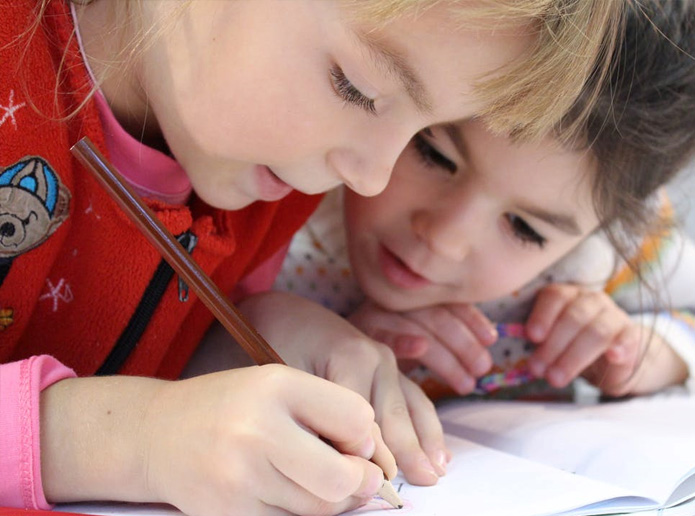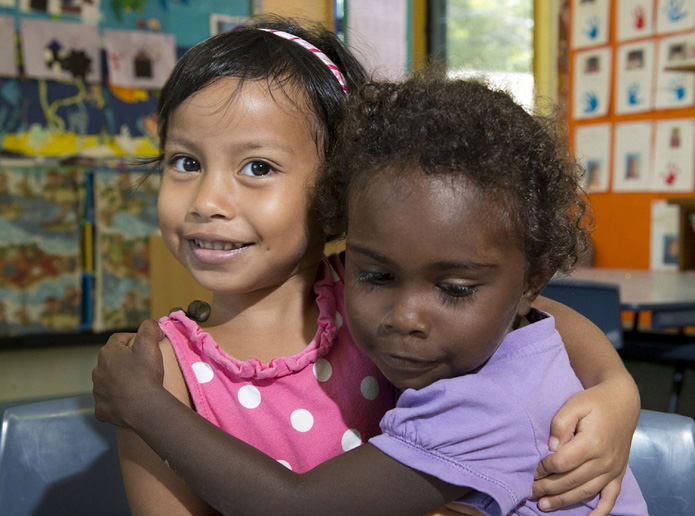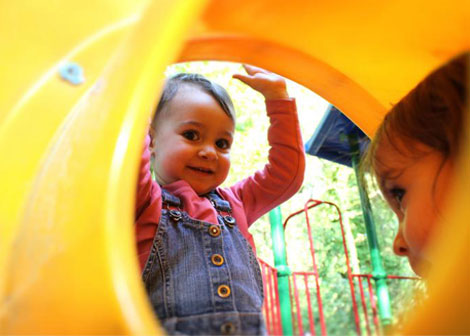Numeracy is all about understanding and working with numbers. It is the ability to apply different maths concepts as needed throughout your everyday life.
Just like with reading and writing, numeracy is a skill that develops overtime and begins from birth.
Examples of numeracy include:
- Being able to calculate how much four items will cost
- Making informed decisions about value for money
- Understanding how long it is until your appointment
- Estimating how much a tank of petrol will cost
Important numeracy skills and concepts
As you interact and play with your child everyday, they are learning the foundations of numeracy that will be essential when they start school and learn more formal maths. This includes:
- counting and one to one correspondence
- beginning to recognise numbers
- learning shapes and what they look like
- noticing and making patterns
Numeracy skills also rely on your child understanding concepts such as:
- same/different
- more/less/equal
- many/few
- altogether
- big/small
- full/empty
- heavy/light
- long/short
- whole/half/quarter
In order for your child to learn these concepts, they need you to show them what they mean over and over again every day.
Supporting your child’s numeracy skills
You can help your child develop numeracy skills simply through your everyday play.
- Talk to your child about numbers and count with them.
- Use your fingers to provide your child with a visual cue about “how many”.
- Talk about the numeracy choices your child makes. For example “you want five grapes, that’s more then you had yesterday. Yesterday you only had three”. Or “you have chosen the biggest biscuit. All of the others are smaller”.
- Show your child what maths concepts mean in your play. For example “We are all going to play beetle. How many leaves do we need? One for each person. One, two, three, four.”
- Share books about counting and numbers.
- Sing songs about counting and numbers.
- Talk about the time and show your child numbers on a digital or analogue clock. Talk about how much longer it is to wait.
- Show your child numbers in their everyday life. For example on letter boxes, speed signs, in catalogues, on clocks, on your phone, the remote control, clothing tags, receipts, the microwave etc.
Six great ways to promote numeracy everyday
Take a number walk
- As you walk together, point out the different numbers on letterboxes. Talk about the numbers together. For example “That house is number four. That’s the same as you. You’re four. Let’s count to four on our fingers. One, two, three, four”.
- Estimate the number of steps or jumps or skips to the next light pole. Count together as you move.
- Count as you push your child on the swing. Tell them ‘how many more’.
- Look at shapes on the play equipment. Notice objects that make triangles, circles, squares.
- Write numbers in the sand.
- Sort gumnuts into groups of one, two, three, four etc.
- Count the number of rungs on the ladder. Talk about which ladder has more rungs. Point out that it is taller.
Shopping
- When shopping for fruit and vegies together ask your child to count out the fruit. For example you might say “we need 8 oranges”. Encourage your child to count as they place them in the bag. Use words like “more” or “too many”. Talk to your child about how many more are needed. For example “We have six oranges. That means we need two more. Six and two makes eight.”
Cooking
- Let your child measure the ingredients.
- Weigh items on the scales and talk about the numbers.
- Talk about concepts like more and less, heavy, light, too many, altogether.
- Count as you measure spoonfuls into the mixture
- Set the time on the oven together. Talk about the numbers.
Bath time
- Bath time is a great time to talk about maths concepts such as full/empty, heavy/light, more/less. It is also a great time to talk about dividing. For example, pour water into cups. Talk about which has more and which has less. Use words like equal as well.
Setting the table
- Setting the table is an activity that needs to be done most days. Involve your child by asking them to count how many people are coming to dinner. Talk about how many plates, cups, knives, forks etc. are needed. Help your child count them out. Use words like ‘each’, ‘altogether’, ‘same’ and ‘different’.
- Help your child pour water in each glass. Talk about empty and full, more and less.
Teddy bear’s picnic
- Pack everything you need for your teddy bear’s picnic. How many toys will be coming along? Count them together. Pack a cup and bowl for each toy.
- Make a cake out of playdough and divide it between the animals. Talk about how many pieces are needed. Talk about the size of the pieces. Which teddy got more and who got less?
Want to know more?
The Raising Children Network – Developing early numeracy skills
Zero to Three – Let’s Talk about Math: Early math video series






